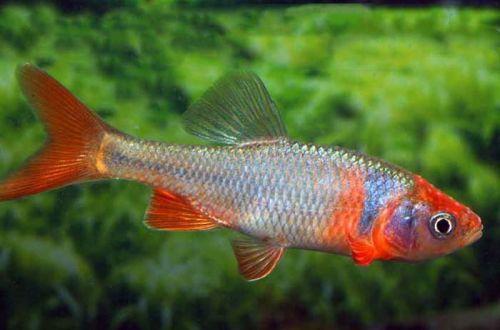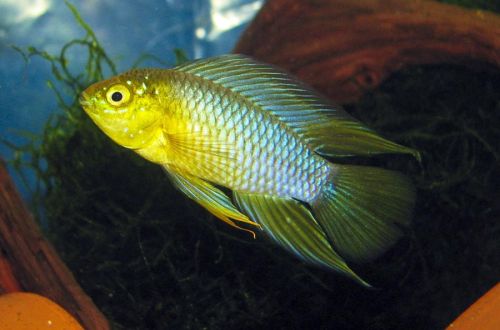
Mollies latipina
Molly sailboat or Molliesia latipina, scientific name Poecilia latipinna, belongs to the Poeciliidae family. An amazing beautiful fish with an unusually large and wide dorsal fin resembling a sail. At present, it is difficult to find the original representatives of the species, mainly hybrid varieties are found that are distinguished by a rich variety of colors.

Contents
Habitat
The original habitat was limited to North and Central America by the Yucatan Peninsula (southern states of the USA, Mexico). Currently, the fish is found on almost all continents and parts of the world from Africa to Australia and New Zealand, where it came from home aquariums. In nature, it inhabits coastal brackish water bodies (lakes, swamps), estuaries of rivers flowing into the sea.
Brief information:
- The volume of the aquarium is from 80–100 liters.
- Temperature – 22-28°C
- Value pH — 7.0–8.5
- Water hardness – medium to high hardness (15-35 GH)
- Substrate type – any
- Lighting – any
- Brackish water – no
- Water movement is weak
- The size of the fish is 11–12 cm.
- Food – any food
- Temperament – peaceful
- Content alone, in pairs or in a group
Description
Hybrid varieties dominate the aquarium hobby. Mollies latipina lost their original appearance and became noticeably different from their wild relatives. The situation with hybridization is exacerbated by the fact that the fish successfully interbreed with closely related species, such as Velifera Mollies, and produce healthy offspring.

Depending on the specific species, the sizes vary from 10–15 cm in males to 12–18 cm in females, although in the original the fish rarely exceeded 11–12 cm in length. They have a body shape typical of the Poeciliidae family, the main distinguishing feature is a large dorsal a rectangular fin in males, in females it is much smaller. Depending on the morphological shape, the tail can have both rounded outlines and a lyre-shaped shape.
The color is the most diverse: pale golden with rows of bright colored dots, orange, black, red with stripes or plain.
Food
They accept all types of dry, frozen and live food. It is recommended to include herbal supplements in the diet, for example, spirulina flakes – relevant when using artemia, daphnia and similar products. In dry food, plant components are usually already present.
Maintenance and care, arrangement of the aquarium

In design, the main requirement is the presence of a large number of floating and rooting plants, or artificial vegetation, but at the same time maintaining free areas for swimming. Other design elements are selected at the discretion of the aquarist or based on the needs of other fish.
When keeping, special attention should be paid to the composition of the water. Optimal habitat is achieved at high pH and GH values. Maintaining a stable water composition can be difficult for beginner aquarists, so it’s a good idea to read the information Determining and Changing GH and pH Parameters.
Aquarium maintenance is standard and includes a number of mandatory procedures: weekly replacement of part of the water with fresh water, which is usually combined with the removal of organic waste (food residue, excrement), and equipment maintenance.
Behavior and Compatibility
Lively peaceful fish. As neighbors, you should acquire species similar in temperament and size that can live in slightly alkaline hard water. Many active fish, such as Barbs, are prone to biting their long fins, and Molly sailboats can become their prey.
Breeding / breeding
There are no difficulties with breeding; in favorable conditions, spawning can begin at any time. The female is able to give offspring several times a year. The entire incubation period, which is up to 2 months, the eggs are in the body of the mother and fry ready for independent life are born. Parents do not take care of their offspring, therefore, for their safety, be sure to provide dense thickets of floating plants, where they can hide until they are moved to a separate tank.
Fish diseases
First of all, the health of fish is affected by the external environment, a decrease in water quality, poor nutrition or a long stay in unsuitable conditions (pH, GH, low temperature) will certainly affect well-being. Usually, a return to normal conditions of detention will lead to self-healing, but if the symptoms persist, medical treatment will be required. Read more about symptoms and treatments in the Aquarium Fish Diseases section.





